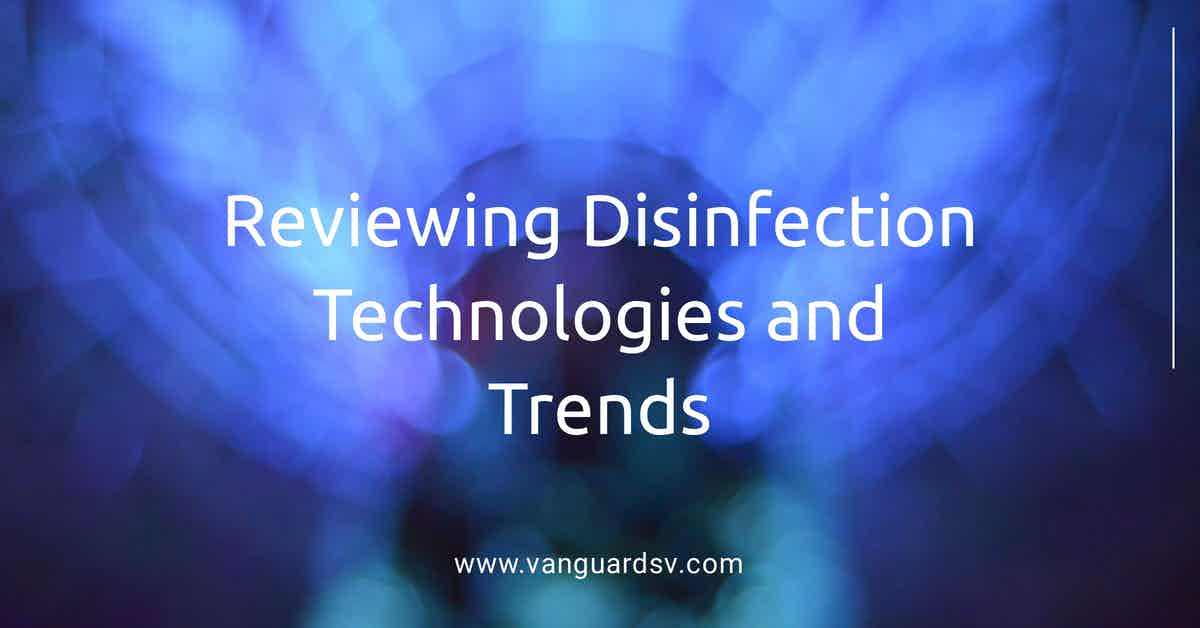Several emerging technologies and trends in the cleaning industry came to the forefront in 2020, thanks to the ongoing coronavirus pandemic, but not all technologies are created equally, are being deployed correctly, or operated in a manner that is both beneficial to facility occupants and the environment.

Evaluating Emerging Disinfection Trends
Two significant disinfection trends have emerged as a result of the ongoing fight to curb the spread of COVID-19--electrostatic and ultraviolet disinfection.
When evaluating these solutions for your facility, it is critical to keep in mind what you're trying to accomplish.
Electrostatic sprayers are delivery methods and, at a fundamental level, no different than any other sprayer applicator in their ability to kill pathogens or bacteria.
UV technologies are excellent at killing germs and bacteria on surfaces, where the surface is clearly exposed to the lighting for a sufficient period of time but is completely ineffective against surfaces for which the light cannot penetrate--such as underneath sinks or behind toilets.
Something else to keep in mind is the product claims against bacteria, mold, pathogens, and mildew.
- The claim must be registered with the U.S. Environmental Protection Agency for the specific pathogen, type of bacteria, mold, or mildew.
- The dwell time required to kill the germ, bacteria, mold, or mildew must be documented alongside the claim with the EPA, and;
- The EPA recognizes NO disinfectant as having residual efficacy against any pathogen--only bacteria, mold, and mildew.
Additional factors to consider when evaluating a disinfectant are:
- Ensuring the product is appropriate for the type of surface being sanitized.
- Evaluating PPE requirements.
- Determining if additional steps must be undertaken to remove residue leftover post-dwell time to prevent occupant exposure.
Electrostatic Disinfection Sprayers
As mentioned, electrostatic disinfection sprayers are highly-effective application methods used to deliver disinfectant products to a surface.
They have no claim to efficacy against any virus, bacteria, mold, or mildew by themselves.
Currently, the EPA lists seven registered disinfectant products used with electrostatic sprayers as effective against SARS-CoV-2.
Studies of the technologies against germs and bacteria, when compared to manual spray bottles or non-electrostatic sprayers, have consistently reported:
- Substantially higher surface coverage ratings in far less time with fewer service technicians--meaning the job gets done faster, better, and cheaper, and;
- Significantly higher product disbursement efficiency--meaning the electrostatic sprayers use less disinfectant more efficiently, resulting in less waste, pollution, and reduced potential for harmful exposure.
UVC Lighting
Ultraviolet-C lighting has proven effective against SARS-CoV-1, but no official claim has been regarding its efficacy against SARS-CoV-2.
As mentioned, as a stationary surface disinfectant, it is of limited use and is typically employed as a stop-gap in place of routine porter services to wipe down high-contact surfaces in restrooms.
In addition to its limitations regarding surface coverage, the level of radiation, typically called a dose, determines the system's efficacy against microbes--the higher the dose, the more effective.
The issue is that the higher the dose of UV lighting, the more risk the light poses to humans--high doses of UV lighting can damage skin and eyes.
Additional limitation includes:
- Generally ineffective against certain surfaces, especially rough surfaces, and;
- Efficacy decreases with distance from the light source.
A better method, and one more likely to get positive results against airborne pathogens, is to upgrade HVAC systems to include commercial-grade UVC lighting.
The open but confined space forces the microbes through the UVC lighting without exposing human occupants and inactivates bacteria and airborne germs.
Circling back around to the question as to whether or not UVC lighting is effective against SARS-CoV-2, the answer, unofficially, is probably.
The severity of the 2020 COVID-19 pandemic warrants the rapid development and deployment of effective countermeasures to reduce indoor person-to-person transmission.
We have developed a promising approach using single-wavelength far-UVC light at 222 nm generated by filtered excimer lamps, which inactivates airborne viruses without inducing biological damage in exposed human cells and tissue.
The approach is based on the biophysically-based principle that far-UVC light, because of its very limited penetration in biological materials, can traverse and kill viruses and bacteria which are typically micrometer dimensions or smaller, but it cannot penetrate even the outer dead-cell layers of human skin, nor the outer tear layer on the surface of the human eye.
Far-UVC light (222 nm) efficiently and safely inactivates airborne human coronaviruses
References & Resources
- Tips For Choosing Between Infection Prevention Technologies
- Evaluating Emerging Cleaning Technologies
- UV Lights and Lamps: Ultraviolet-C Radiation, Disinfection, and Coronavirus
Takeaway
Several emerging technologies have proven, however indirectly, extremely effective at eradicating SARS-CoV-2 or show a strong potential to do so and are simply waiting for the publication of official studies to authorize its use specifically for that purpose.
The tools' effectiveness is a byproduct of the experience and knowledge of the team or individual using them.
No tool is more effective at removing surface pathogens and bacteria while protecting occupant health than enhanced service provider training, which can be extremely expensive to maintain, especially in this economy.
Outsourcing is a proven method for ensuring the highest standards of cleanliness, safety, and training while controlling costs and eliminating management overhead.
If you would like more information regarding the effectiveness of high-performance infection prevention and control measures, or if you would like to schedule a free, no-obligation onsite assessment of your facility's custodial needs, contact us today for a free quote!
In Bakersfield, CA, call (661) 437-3253
In Fresno, CA, call (559) 206-1059
In Valencia CA, or Santa Clarita CA, call (661) 437-3253
In Palmdale, CA or Lancaster, CA, call (661) 371-4756

